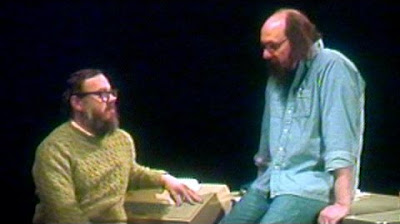Unix vs Linux
Summary
TLDRIn this informative video, Gary Sims explains the differences between UNIX and Linux, tracing their histories from the invention of UNIX by Ken Thompson and Dennis Ritchie to the development of Linux by Linus Torvalds. He discusses how UNIX was initially licensed and adapted in various institutions, leading to different flavors like BSD and System V. The video highlights Linux as a 'Unix-like' operating system created from the free software philosophy, ultimately emphasizing its widespread adoption in devices like servers and smartphones. The rich legacy of both operating systems is celebrated, showcasing their enduring impact on modern computing.
Takeaways
- 😀 UNIX was developed in the 1970s by Ken Thompson and Dennis Ritchie as a response to frustrations with the Multics project.
- 😀 The name 'UNIX' evolved from an earlier version called 'Multix' and reflects its ability to run a single program at a time.
- 😀 UNIX was rewritten in the C programming language, which was also developed by Thompson and Ritchie, enhancing its portability.
- 😀 The BSD (Berkeley Software Distribution) emerged from UNIX developments at UC Berkeley, leading to distinct versions of UNIX: System V and BSD.
- 😀 The early 1990s lawsuit between AT&T and UC Berkeley resulted in the release of BSD 4.4, a version of UNIX without AT&T code.
- 😀 Richard Stallman founded the GNU Project to create free software alternatives, which played a crucial role in the development of Linux.
- 😀 Linus Torvalds began developing Linux in the early 1990s as a free, UNIX-like operating system inspired by MINIX.
- 😀 Linux does not use UNIX source code but follows UNIX principles, making it a UNIX clone or UNIX-like system.
- 😀 Today, Linux powers a vast range of devices, from smartphones (Android) to servers, with about 60% of web servers running on it.
- 😀 The popularity of Linux has led to various distributions, each built on the Linux kernel and incorporating a wide array of software tools.
Q & A
What is the primary function of Linux?
-Linux is an operating system kernel used in various devices, including servers, desktops, and smartphones.
Who invented UNIX, and what was its initial purpose?
-UNIX was invented by Ken Thompson and Dennis Ritchie in the late 1960s and early 1970s as an alternative to the Multics operating system.
What is the difference between UNIX and Linux?
-UNIX is a commercial operating system developed by AT&T, while Linux is a UNIX-like operating system created by Linus Torvalds, which does not share original UNIX source code.
How did BSD relate to UNIX development?
-BSD, or Berkeley Software Distribution, developed from UNIX sources licensed to the University of California and created its own versions of UNIX.
What was the significance of the POSIX standard?
-The POSIX standard was established to ensure compatibility between different UNIX versions and programs, defining necessary APIs for compilation.
Who is Richard Stallman, and what is his contribution to free software?
-Richard Stallman founded the Free Software Foundation and promoted the idea of free software, emphasizing user freedom rather than cost.
What role did MINIX play in the development of Linux?
-MINIX, created by Andrew Tanenbaum as an educational tool, influenced Linus Torvalds in developing the Linux kernel.
What is the GNU General Public License (GPL), and why is it important?
-The GPL is a free software license that allows software to be freely used, modified, and distributed, playing a crucial role in the development of Linux as open-source software.
How prevalent is Linux today?
-Linux is widely used, powering around 60% of web servers, the Android operating system, and many other devices.
In what ways does FreeBSD connect to modern operating systems?
-FreeBSD has influenced various operating systems, including macOS, through its source code and UNIX philosophies.
Outlines

This section is available to paid users only. Please upgrade to access this part.
Upgrade NowMindmap

This section is available to paid users only. Please upgrade to access this part.
Upgrade NowKeywords

This section is available to paid users only. Please upgrade to access this part.
Upgrade NowHighlights

This section is available to paid users only. Please upgrade to access this part.
Upgrade NowTranscripts

This section is available to paid users only. Please upgrade to access this part.
Upgrade NowBrowse More Related Video

Dennis Ritchie's video interview June 2011 by DennisRitchie.in

The Rise of Unix. The Seeds of its Fall.

UNIX: Making Computers Easier To Use -- AT&T Archives film from 1982, Bell Laboratories

Evolution of Unix and Linux Operating Systems

¿Por qué UNIX es el Sistema Operativo más importante de la historia?

Histoire d'UNIX - 🅲 MOOC
5.0 / 5 (0 votes)